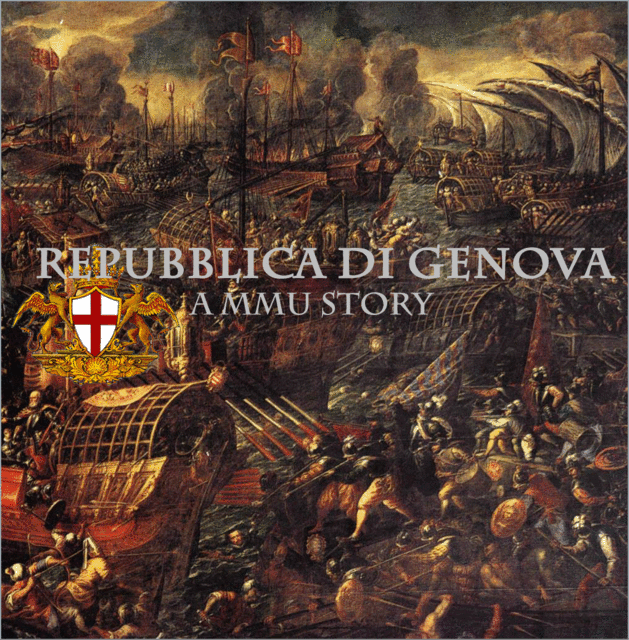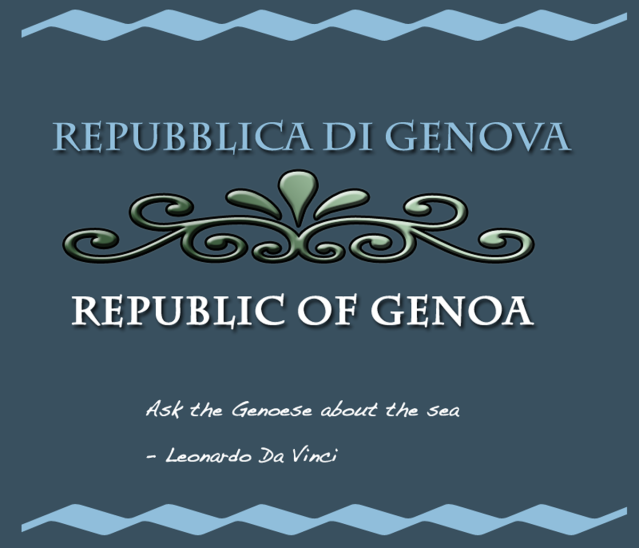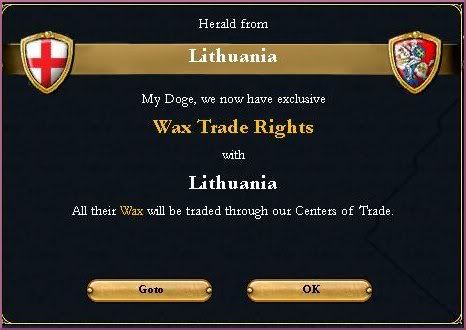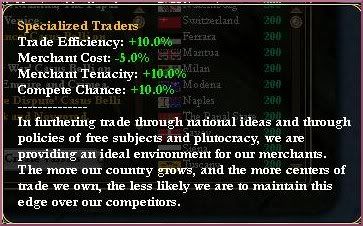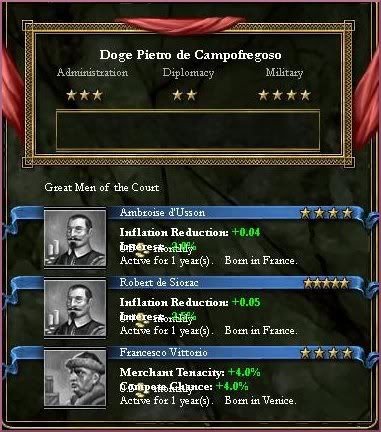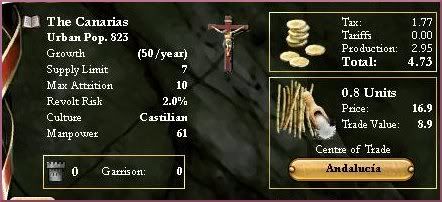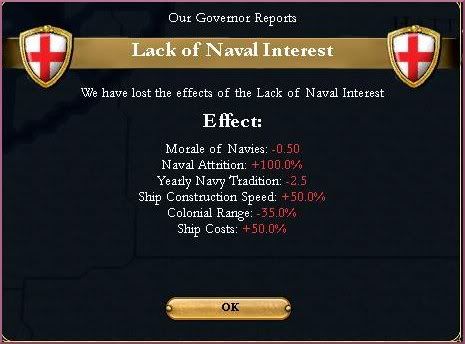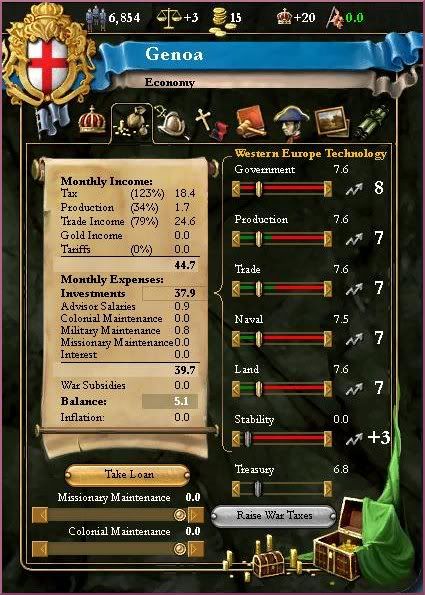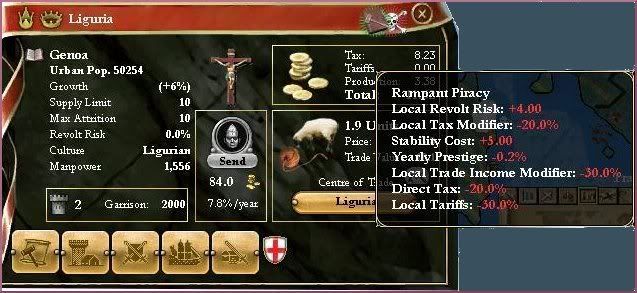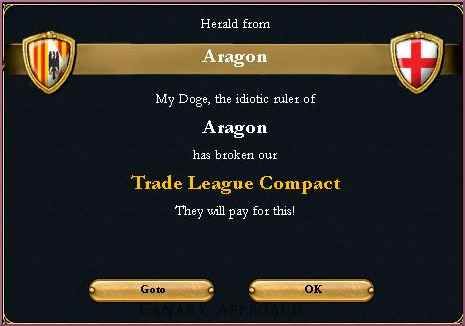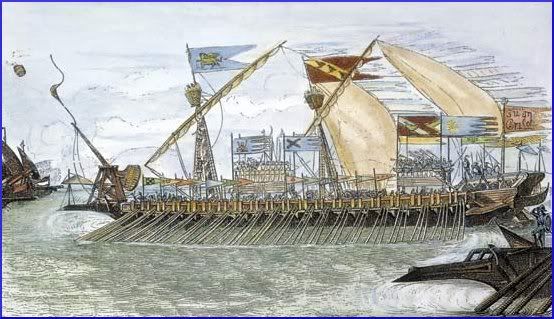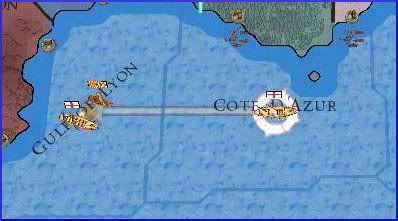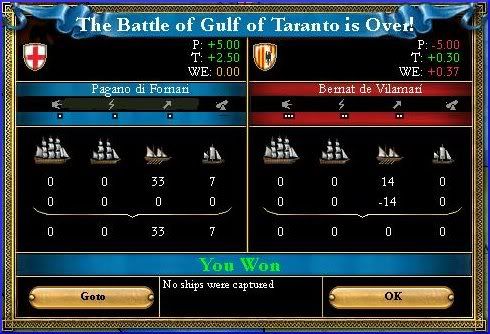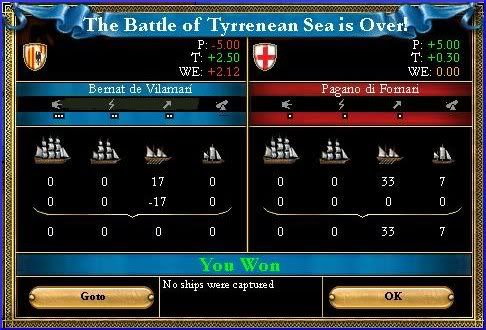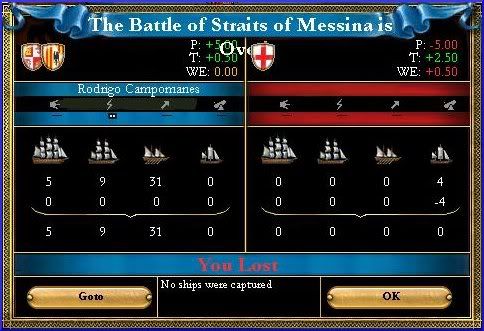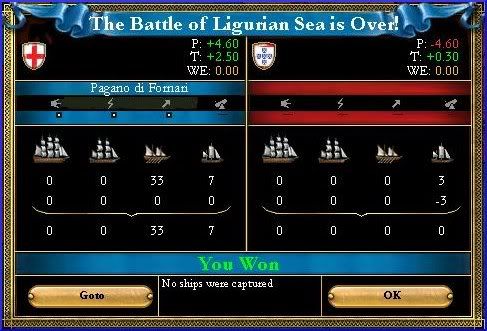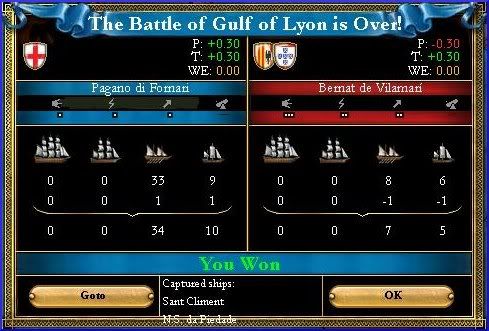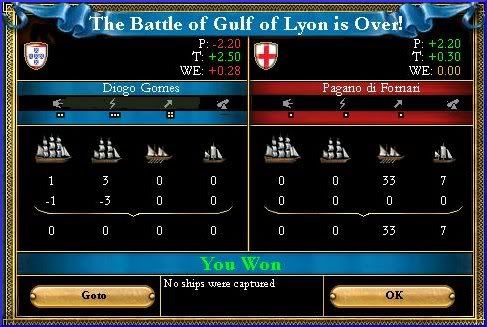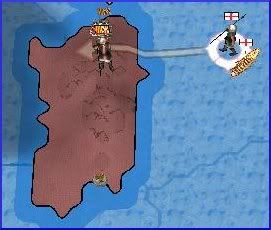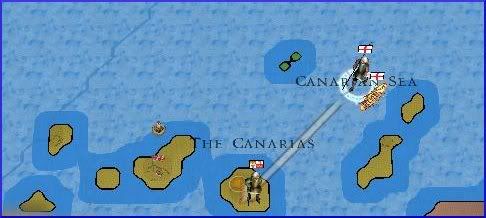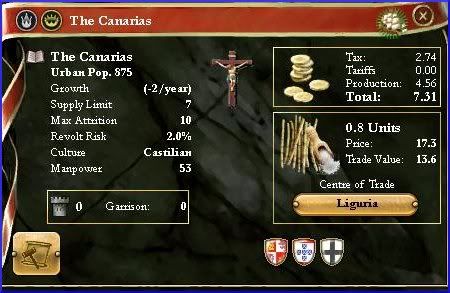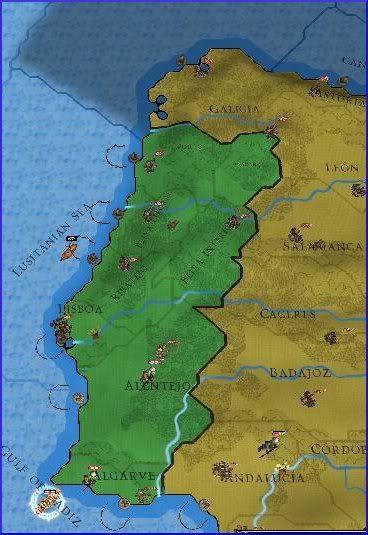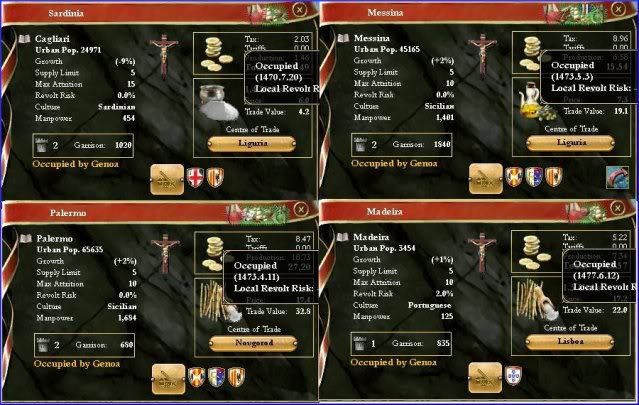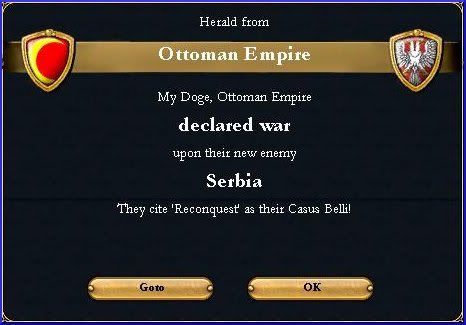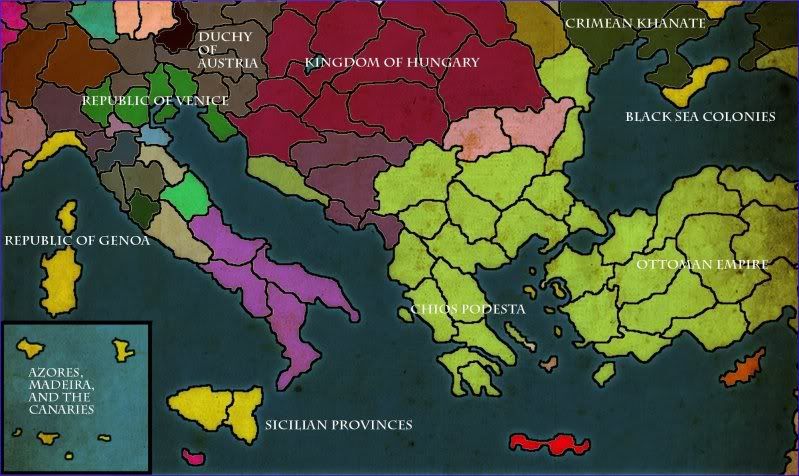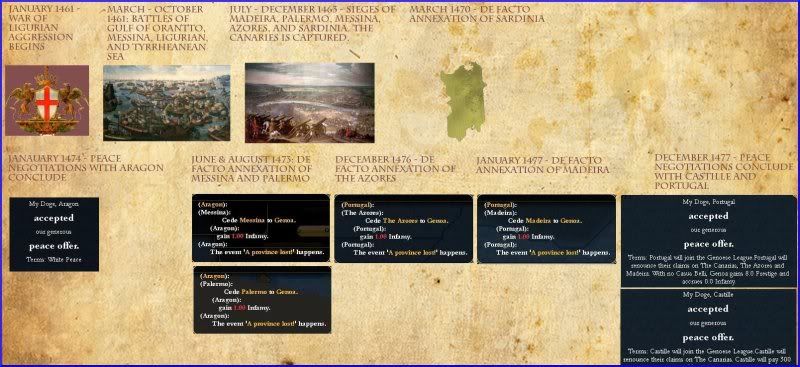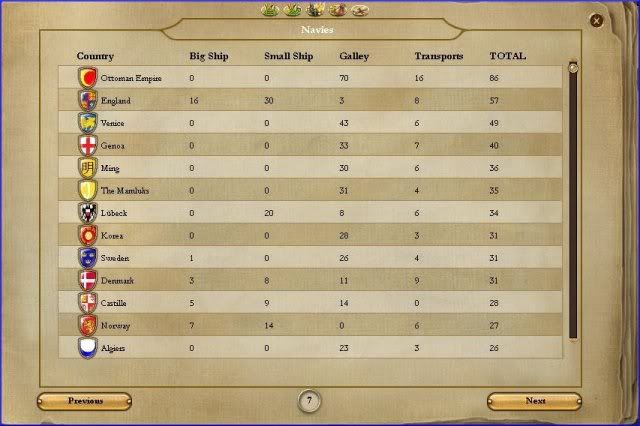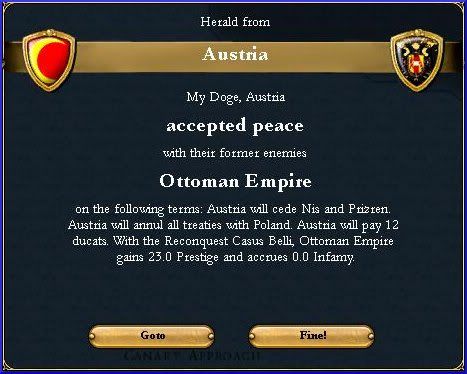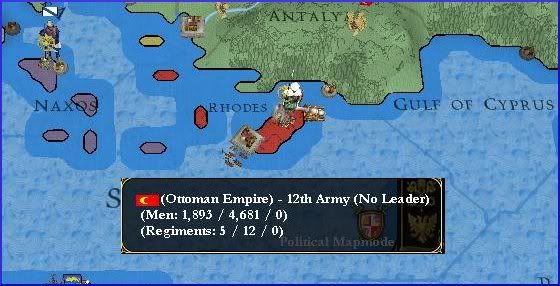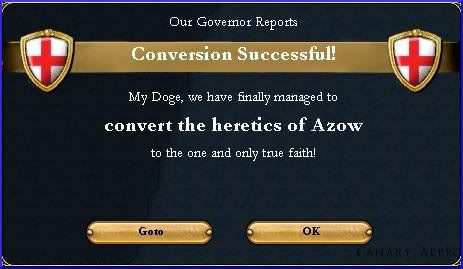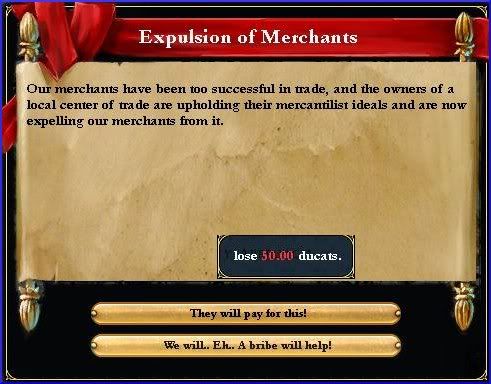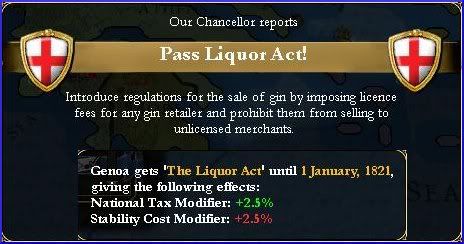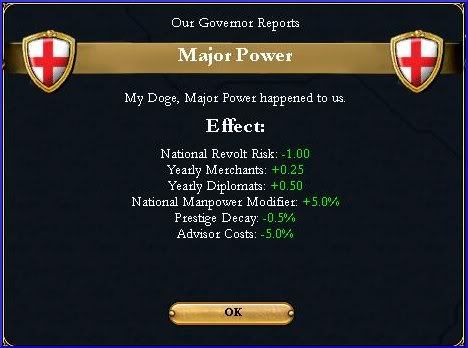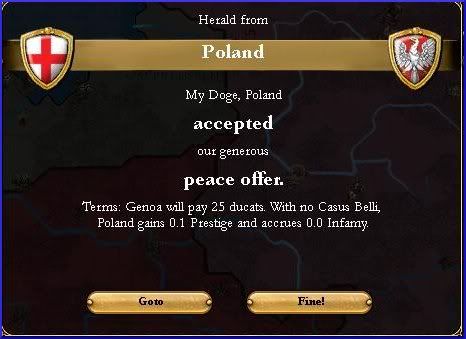In the history of armed conflict at sea, there is no engagement better known than the War of the Ligurian Aggression. The name stands forth in virtually every contemporary account as synonymous of the clash between the North Atlantic naval powers and the old guard of the Mediterranean sea. It is the watershed that confirms the continued superiority of muscle-powered galleys within the confines of an inland sea.
To the Castillian and Portuguese crown, the Mediterranean was something of a military and economic backwater. Commercial interests in the Mediterranean meant little to Castille, who was too preoccupied with subjugating the remaining Moors on the Iberian mainland as part of the Reconquista.
For Portugal, the obsession with rounding the continent of Africa to find a sea route to India has led to a steady decline in galley construction over the past decade. As a result of Prince Henry the Navigator's vision, Portugal's peacetime galley force was replaced by double hulled Men-of-Wars capable of braving the Atlantic currents.
Only Aragon still maintained an appreciable naval presence in the Mediterranean. With a galley-strength of 39 ships, the Aragonese fleet was needed to secure military support to the frequently rebellious islands of Sicily and Malta.
Despite the marked numerical disadvantage facing Genoa, the Republic believed it could hold its own based on three factors. Firstly, the technical superiority of the Italian galley. With a long history of superior seamenship
(National Idea: +1 Maneuver and +0.60 Morale), the Genoese galley held a technical advantage over the standard Iberian model. The “galee grosso” or “big galley” was a modification made by arming merchant vessels, which had large and stable hulls, with a heavy artillery arnament. Often, but not always, larger than ordinary galleys, they are the Mediterranean symbol of tactical superiority and combat leadership
par excellence.
The Genoese galee grosso. Pulled by a crew of 60 free men and armed with four mid-sized cannons
Secondly, the Genoese held a manpower advantage. Each galleys' rowing gang – the
ciurma – was a specialized fighting force of free men. In contrast, the Iberians, especially the Aragonese and Castillian, outfitted their galleys mostly with Muslim slaves captured in the Reconquista and conflict with the Berber Kingdoms. The galley's total dependence on human energy for tactical mobility, unlike the broad ships of the Atlantic, means that the Genoese held an advantage. The free men of the Republic were willing to fight with a total conviction of purpose, whereas the Iberians' galley slaves were willing to capitulate under heavy fire.
Finally, though it may not initially seem an advantage, the Genoese are outnumbered. The relatively small size of the Genoese fleet means that coordination between squadrons is rapid and orders for tactical maneuvers quickly relayed. The Iberian alliance, on the other hand, had trouble coordinating between such a vast fleet. The Aragonese resented the Castillians for de facto leadership of the alliance, the Castillians did not trust the Aragonese fleet, and the Portuguese just wanted a quick end to the conflict in order to continue with their voyage around Africa.
__________________________________________________
The sites of engagement in the Mediterranean during the War of Ligurian Aggression
__________________________________________________
Battles
The tactics employed by the Genoese are simple – hug the shores of the Mediterranean where the galo grosso had a decisive advantage in maneuverability over the big ships employed by the Iberians. Military access to France, the Papal States, and Naples also insures that crews can enter friendly ports for outfitting and repairs after every naval engagement.
The Battle of the Gulf of Lyon, the first engagement in the war, helped lay the groundwork for future conflicts. A scouting party consisting of 3 Cogs was sent out to ascertain the strength of the Aragonese fleet, only to be intercepted by an advance force of the Aragonese. The Republic's main fleet quickly moved to reinforce the scouting party, resulting in a complete rout of the Aragonese.
Scouting party intercepted by Aragonese main fleet, Genoese main fleet moves to reinforce
A strategy was thus derived – an advance scouting party consisting of Cogs was to be dispatched in front of the main fleet. The Iberian fleets, overzealous in destroying stray (and easy) targets, will move to intercept, at which point the main fleet will ambush the Iberian navy.
The strategy was put to the test at the Battle of the Tyrrenean Sea, Battle of the Straits of Messina, and the Battle of Taranto Straits. Sure enough, the Aragonese fleet fell for the bait, leading to the total destruction of their forces. A sense of begrudging respect was accorded to the Aragonese - the galley slaves refused to surrender their ships even in the face of imminent destruction.
The Aragonese failure to combine their two main squadrons results in their total destruction
The lack of coordination between the Iberians was particularly salient in these engagements – for the Castillian Men-of-Wars failed to arrive in time to reinforce the Aragonese galleys. The scouting party of 4 cogs were dispatched to face the Castillian ships, buying valuable time that allowed the main force to escape to port.
The scouting party sacrifices itself to buy crucial time for the Republic's main fleet to escape. Their deaths are immortalized in the annals of history.
After the total destruction of the Aragonese fleet, the odds were finally level against Genoa.
Only the Castillians have any appreciable naval presence left. However, their remaining ships are docked at the ports facing the North Atlantic, a voyage too treacherous for the galleys of the Republic to attempt.
A series of minor skirmishes with the remainder of the Iberian alliance's fleet ensued. Vain attempts at troop-reinforcements were made by the desperate Iberians, trying to draw the Genoese into an engagement on land. No quarter is given.
Several of the many skirmishes that ensued along the Mediterranean.
In most cases the Genoese emerged victorious, with the exception of one. An unexpected encounter with a relief force of Castillian big ships resulted in the capture of one of the Republic's galleys. Here, the maneuverability of the Genoese galleys proved their worth – for they were able to escape to port and escape total destruction despite crew morale at an all time low. The capture of Ira, a galee grosso flagship of the Republic, plunged the morale of the crew into an abysmal depth. It took a full six months of shore-leave in the port of Napoli before the crew again took up arms. To this day, the innkeepers and whorehouses of Napoli still fondly remember the summer of 63' when their coffers swelled with Genoese lira.
Thankfully, superior seamenship allows our galleys to escape mostly unharmed.
__________________________________________________
Finally, with the remainder of the Iberian navy afraid to leave port, the Genoese condotta ventured intrepidly to mount sieges on the Aragonese-controlled Palermo, Messina, Sardinia, the Baleares and the Portuguese-controlled Azores and Madeira.
Sieges are mounted - the Condotta finally sees action after restless months at sea.
The Canaries was seized by the Republic's forces. Though the settlement's Castillian inhabitants were allowed to remain cultivating the plantations, a cease order was placed on all immigration of Iberians to the island. As a result, the growth rate of the colony was stunted. The plan is for a systematic resettlement of the island with Ligurian enterprisers once intrepid colonists are available to the Republic.
Colonial growth in the Canaries is restricted until good Ligurian stock can settle the island.
A blockade of Iberian ports, in collaboration with the pirates that harass Atlantic shipping, is mounted. The seizure of Portuguese cargo ships saw a brief flux of goods into the Ligurian heartland. Granadan silk drove Pisan merchants out of business while Carmine from Alentejo forced a run on Polish alum prices.
Blockade of Lisboa. Piracy becomes a problem for the Iberians.
Meanwhile, the islands under Iberian control fall one by one. The Sardinians, though apprehensive towards the occupation force, hold close cultural links to their neighbors in Genoa-controlled Corsica. Years of intermarriage and migration between Liguria and Sardinia means that the island is receptive to eventual annexation by the Republic.
For the Sicilians, there was a pervasive sense of circular poetic justice. It was only 150 years earlier that the Sicilian Vespers rebellion brought down King Charles of France's empire. Now, the annexation of Palermo and Messina will be the downfall of King Alfonso V's.
The long wait begins.
Peace negotiations with the Iberians still prove too difficult. Local collaboration is needed for annexation of the occupied islands.
__________________________________________________
Meanwhile, Pietro glances apprehensively at reports of continued Turkish forays into the Balkans. The War of Achaean reconquest resulted in a direct Ottoman-controlled port overlooking the Ionian. The Venetians, guarantors of Achaean independence, entered into a ruinous conflict that resulted in Croatian independence. Now, the Ottomans' declaration of war on the Despot of Serbia threatens to destabilize the entire region as the Austrian and Georgian monarchies answer the Despot's call to arms...
The Ottomans are relentless in their push through the fractious kingdoms of the Balkans.
While news of a distant union trickles into the Republic's Council. Where lies this distant land?
